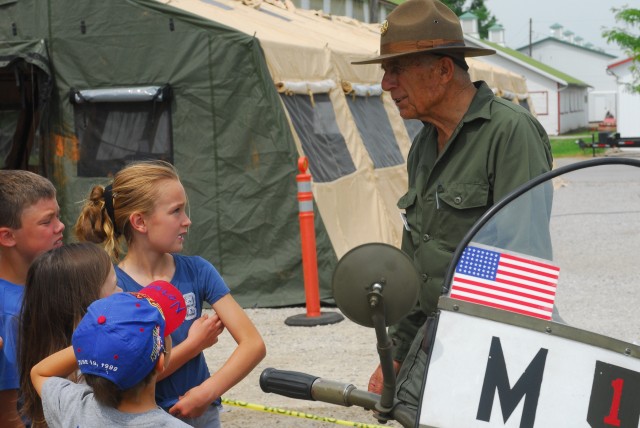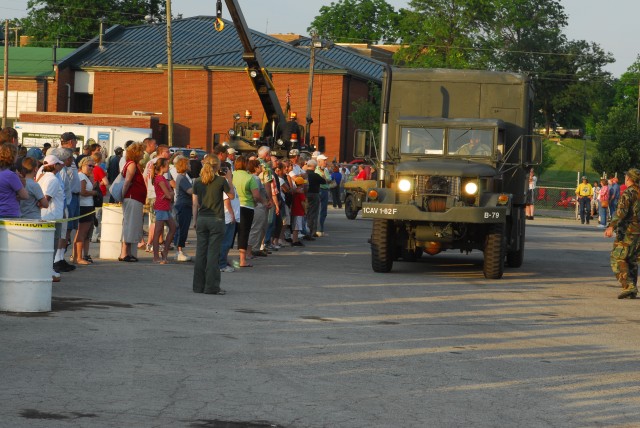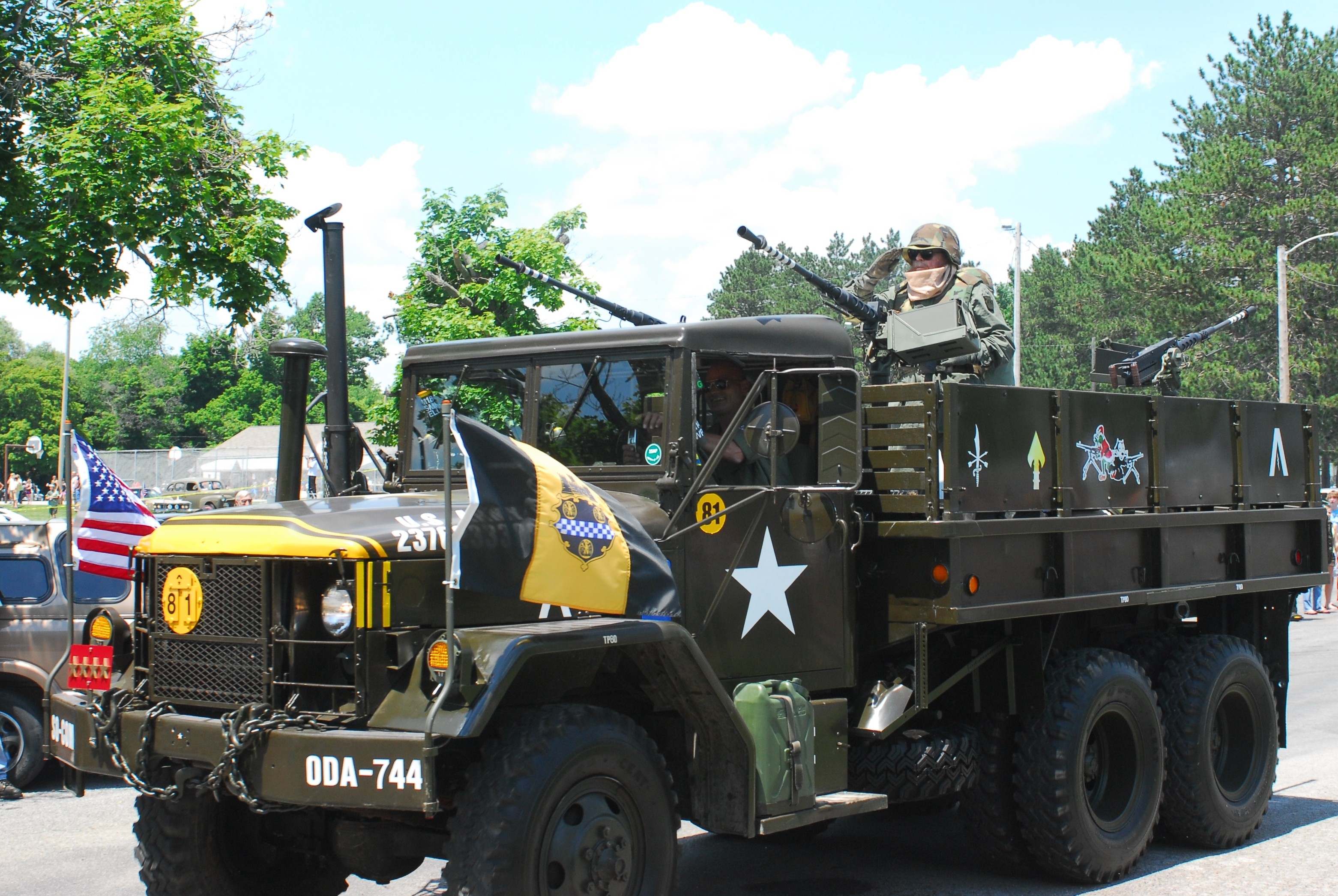WOOSTER, Ohio - Most would agree that one of the most critical aspects of the Army is the recruitment of the next generation of Soldiers. With the Department of Defense plugging millions of dollars into recruiting, perhaps one of the most effective tools in recent memory received no federal funding.
Over 250 military veterans and vehicle collectors are currently reenacting the 1919 Army Transcontinental Motor Convoy, which was the first convoy to travel from east coast to west coast along the Lincoln Highway, or present day U.S. Route 30. Traveling from Washington D.C. to San Francisco, the convoy features military vehicles from every era starting with 1919 and will stop at approximately 350 towns and communities along the way, just like the original convoy did years ago.
"So far the community support we have seen at our stops has been unbelievable," said Sgt. 1st Class Mark Ounan, 324th Military Police Battalion and an owner of a 1918 Dodge Brothers vehicle. "This convoy is such a great opportunity for the younger generation to learn about military history and hear stories from combat veterans from World War II to Iraq. This could be a huge recruiting tool for not only the Army but every service."
Even some of the younger people participating in the convoy are taking the opportunity to gain some knowledge from the older generations.
"Some of the stories I've heard along the way have opened my eyes to many things about what it means to in the military," said Jacob Wood, who is 16 and a resident of Akron, Ohio. "I am definitely going to join the military after high school."
With recruitment at a high priority, events like this convoy are vital for the future of the military and must be utilized to their highest potential, said Ounan.
"We will probably never know how effective this convoy was as a recruiting tool, but if it was the deciding factor in one kid joining up, it makes this journey that much more worth it," said Ounan.






Social Sharing